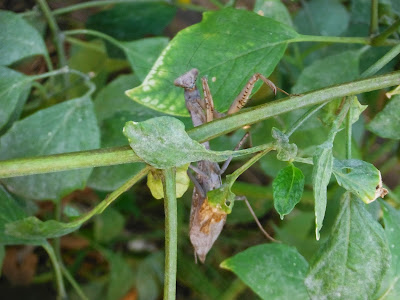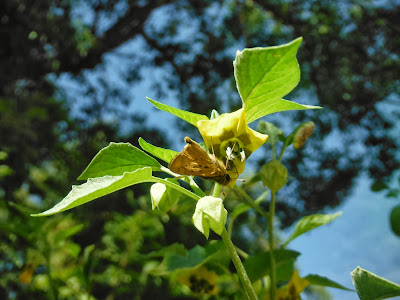I grew tomatillos this year and have been asked, "What does one do with tomatillos?" Hopefully this helps to understand the lantern fruit a little better and to enjoy it deliciousness.
.JPG) |
| The seedlings |
.JPG) |
| Add caption |
.JPG) |
| A little bigger |
.JPG) |
| A lantern fruit hugging the ground |
.JPG) |
| A much needed pollinator. Tomatillo plants require you to have two plants at least because they can not self pollinate. |
.JPG) |
| This is just the one plant. My goodness. |
.JPG) |
| The Harvest |
.JPG) |
| Tomatillo Salsa: 3 pounds of Tomatillos 2 shallots-peeled 1 yellow onion- peeled 1 Jalapeno 1 Red pepper 1 Whole Clove of Garlic (un-shucked) 2 Limes Handful of Cilantro 2 tsp sugar 1 tsp salt (more to taste) |
.JPG) |
| The Red one is a tomato salsa I made in the same night. Tomatillo is Green. (Salsa Verde) |
.JPG) |
| Make sure you lay corn tortillas down first to lay the little enchiladas on. |
.JPG) |
| Chicken, then Salsa Verde, then a little cheese |
.JPG) |
| Fold into a pan with the open side down on the 4 corn tortillas you laid out as a base |
.JPG) |
| Add Jack Cheese |
.JPG) |
| Add Enchilada Sauce |
.JPG) |
| Add olives, Cilantro, Sour Cream and Green Onions. Serve with Salad. |
.JPG)
.JPG)
.JPG)
.JPG)
.JPG)
.JPG)































.JPG)
.JPG)
.JPG)
.JPG)
.JPG)
.JPG)
.JPG)
.JPG)
.JPG)
.JPG)